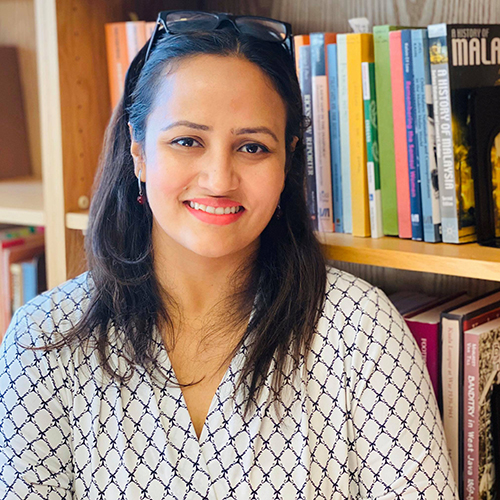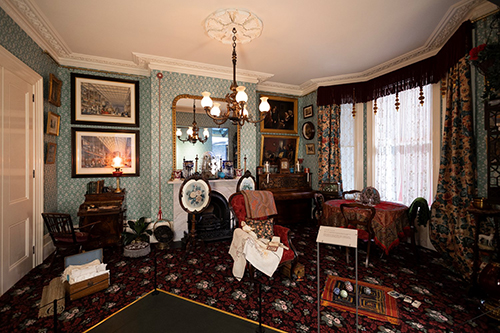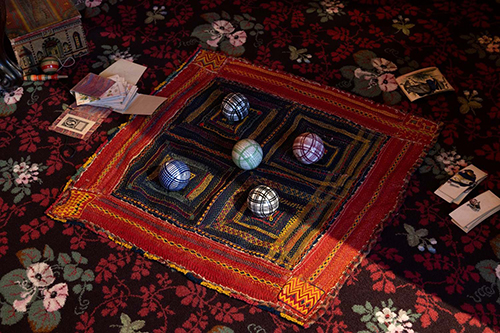
DENTON (UNT), Texas — A new permanent museum exhibition in London is bringing a University of North Texas professor’s research on traveling Indian ayahs, or domestic caregivers, to life.
Arunima Datta, assistant professor in UNT’s Department of History, curated the display in collaboration with the Museum of the Home, a museum that
facilitates exhibitions, programming and research related to the concept of home in
Britain. Titled “A Townhouse in 1878,” the exhibition reflects the influence of an
ayah on a typical late 19th century British household.
“Caregiving in a 19th century British home was not like a scene out of Mary Poppins. It was much more complex, shaped by diverse influences from the colonies,” Datta
said.
While researching the histories of Indian indentured laborers in British Malaya, Datta
discovered the payroll record of a female plantation worker who was forcibly retired
from manual labor and hired as a caregiver for the plantation manager’s wife and children.
The ayah traveled with the family from India to Great Britain just a few months later. Following
this lead, Datta found there were thousands of similar cases of caregivers making the long journey between the two countries, bringing cultural influences with
them as they traveled.

“Ayahs sang traditional lullabies to British children, they brought new foods and recipes,
they brought Indian jewelry to British women — all while caring for the precious cargo
of the British Empire, that is, the children who were the future of the empire,” Datta
said.
In the 19th century, prior to the opening of the Suez Canal, a trip between Britain
and India could take between six to seven months. Some ayahs made the trek over 50 times. They were frequently abandoned by their employers, stranded
without money and left to wait for safe passage home. Those waiting periods inspired
the title of Datta’s book, Waiting on Empire: A History of Travelling Ayahs in Britain, published by Oxford University Press.
“During those periods of waiting, some ayahs developed small entrepreneurial ventures and showed great strength, while others found
brave ways to negotiate the uncertain situations they found themselves in,” she said.
“It’s a story of struggle, but also one of resilience.”

The Museum of the Home invited Datta to curate an exhibition based on her research.
The display — which is arranged and decorated to resemble a room within a typical
1878 British home — features artifacts like an ayah’s play doll, toys and passport documents. Reproductions of common period items, such
as a pashmina shawl and a ruby-studded earring from Datta’s family collection, are
present. The scene also includes sensory components: a sound recording of an ayah singing a lullaby, and the smell of Indian incense and perfumes from a custom-made
scent diffuser.
Since its opening, the exhibition has sparked other learning opportunities and events
in the United Kingdom, including an invitation for Datta to speak at the High Commission
of India, a diplomatic mission based in London. Across the UK, she has participated
in historical lectures, cooking demonstrations using recipes from ayahs and public art projects related to her research. These events often bring together
attendees from various backgrounds — many with ancestors who employed ayahs — who share family letters, pictures and other archival materials. Datta said these
living artifacts could influence the exhibition and help it evolve over time.
“As the British Empire expanded and established its presence in various regions, it
absorbed and brought back elements of those places, including the people and their
cultures,” she said. “This research aims to decolonize British history by revealing
the flows and counterflows of influence, presenting a more accessible view of Britain
and its empire’s past.”